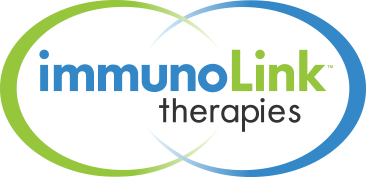How Much Protein Do We Need?
Protein foods are essential for building muscle, burning fat, supporting metabolism, and even bolster the health of certain organs like your thyroid and adrenal glands — in other words, we need protein to heal and to be healthy. But how much protein should you have per day? It really depends on what your health goals are.
EA administration can improve brain injury outcomes
Ellagic Acid (EA) is an active ingredient in our Stem-Kine.
Researchers have found it improves endogenous neural stem cells proliferation and neurorestoration through Wnt/β-catenin signaling in vivo and in vitro (see: Mol Nutr Food Res. 2017 Mar;61(3). doi: 10.1002/mnfr.201600587. Epub 2016 Dec 2.).
Antioxidant and Stem Cell Booster
Selenium is a trace nutrient element that protects cells against oxidative damage. Recent studies show it plays a role in stem cell proliferation and immune system health. It also have the ability to protect us from certain forms of cancer.

Selenium induced active migration in the 3T3-L1 preadipocytes.
Symptoms of Selenium deficiency include impaired cognition, fatigue, immune system dysfunction and infertility. Should you suspect a Selenium deficiency you can take a Selenium supplement or add more Selenium rich food to your diet.
25% of Americans have some form of heavy metal poisoning
It is becoming a well-known fact that environmental exposure to toxic metals and chemicals can damage your immune system and other cells in your body, leading to dozens of different disorders and symptoms, including autoimmunity. According to Dr. Stephen Edelson, an estimated 25% of Americans have some form of heavy metal poisoning, including mercury, lead, arsenic, cadmium, aluminum and nickel. These metal toxins change the chemical structure of our DNA and RNA.

Studies have shown that metals such as mercury, cadmium and lead have been associated with the development of the autoimmune diseases scleroderma, lupus, autoimmune hepatitis, multiple sclerosis, Hashimoto’s thyroiditis, Graves disease, rheumatoid arthritis, lupus, pernicious anemia, chronic fatigue syndrome, fibromyalgia, and type 1 diabetes. And this may well be the tip of the iceberg.
If you have been diagnosed with an autoimmune disease and have the root causes have yet to me diagnosed...We can help.
Our "Second Brain"
Aging affects the ability of stem (and progenitor) cells to function properly, which ultimately can lead to cell death (apoptosis), senescence (loss of a cell’s power of division and growth), or loss of regenerative potential (see: World J Exp Med. 2017 Feb 20; 7(1): 1–10. Published online 2017 Feb 20. doi: 10.5493/wjem.v7.i1.1).

Figure: A proposed mechanism for the aging-induced deterioration of stem cell functions and aging-associated diseases. ROS: Reactive oxygen species.
From the various advances in stem cell research, it is clear that we grow old partly because our stem cells grow old with us. The functions of aged stem cells become impaired as the result of cell-intrinsic pathways and surrounding environmental changes. With the sharp rise in the aging-associated diseases, the need for effective regenerative medicine strategies for the aged is more important than ever. Fortunately, rapid advances in stem cell and regenerative medicine technologies continue to provide us with a better understanding of the diseases that allows us to develop more effective therapies and diagnostic technologies to better treat aged patients.
Our "Second Brain"
Dr. Josh Axe, a certified doctor of natural medicine, has a fascinating on the gut-brain axis on his website.
Here're excerpts:
You’ve probably used the phrases “I have butterflies in my stomach,” “I have a gut feeling about this” or “there’s a pit in my stomach.” Have you ever wondered why so many of these sayings involve our brains and tummies?
"As it turns out, it’s not such a coincidence. In fact, the more we learn about the human gut, or our gut microbiome, the more it’s clear that it really is our “second brain.” You’re probably already aware that leaky gut syndrome is linked to serious conditions and diseases. But science is discovering that the connection between our guts and our emotions is just as strong."
It is a must read for those seeking to understand more about how the gastrointestinal system impacts health and peak performance. Learn More.

Driver Powered by StemKine
The Winning Formula
Our Role Model, Dr. Joe Smarda, let's his race car do the talking for the benefits of StemKine.

Brain on Fire
Connecting Opioid Use, Pain Relief, Depression and Addiction
We have been testing the blood sera of our clients for biomarkers related to Brain Inflammation and also the Blood Brain Barrier (BBB). These clients suffer from chronic pain and autoimmune neuro-disorders. All have elevated inflammation biomarkers and most have indications of a leaky BBB.
European Porsche Cup and ImmunLink Therapies
Keeping our Role Model Healthy and Sharp
Our immunoLinkTM Therapies Role Model, Dr. Josef Smarda, considers Stem-Kine and StemTrophin key to his racing success. It takes total concentration to drive a 650 hp Porsche Race Car around the F1 Hockenheimring.
Can Exercise Make You Sick?
Impact of Excessive Exercise on Immune System
A common perception exists that overtraining will cause athletes to become ill. In fact, results from a survey conducted by the Gatorade Sports Science Institute show that nearly 90 percent of 2,700 high school and collegiate coaches and athletic trainers believe that overtraining can compromise the immune system and make athletes sick.
Omega-3 Fatty Acids and Brain Health
Omega-3s Improve Brain Function and Structure in Older Adults
Our ProDHATM 1000 is in the long-chain omega-3 polyunsaturated family of fatty acids (LC-n3-FA). Seafish are rich in Omega 3s. In this study (see: http://cercor.oxfordjournals.org/content/early/2013/06/23/cercor.bht163.full), researchers found a significant increase in executive functions after LC-n3-FA compared with placebo (P = 0.023). In parallel, LC-n3-FA exerted beneficial effects on white matter microstructural integrity and gray matter volume in frontal, temporal, parietal, and limbic areas primarily of the left hemisphere, and on carotid intima media thickness and diastolic blood pressure.
Imm-Kine and Immune System Health
Action of Lactibaccilus Fermentum
The main ingredient in our Imm-Kine is the probiotic bacteria Lactibaccilus Fermentum. For many years, probiotic bacteria have been known to confer health benefits to the consumer. One possible mechanism for this may be the ability of probiotic bacteria to modulate immune responses.
CoQ10/Ubiquitin For Power and Endurance
Study Results-Sound Science
It is important to me that all our immunoLinkTM solutions are backed by sound science. The focus in this posting is CoQ10 or Ubiquinol. It is a component of the electron transport chain and participates in aerobic cellular respiration, generating energy in the form of ATP. Ninety-five percent of the human body’s energy is generated this way. But what does this mean to you?
Serrapeptase as an Anti-inflammatory
A Key Ingredient of InflamaZyme
Many people in Asia and Europe use Serrapeptase for pain relief and heart health. It is viewed as a healthy alternative to salicylates, ibuprofen and other nonsteroidal anti-inflammatory drugs.
Serrapeptase digests non-living tissue, blood clots, cysts, and arterial plaque and inflammation in all forms. The late German physician, Dr. Hans Nieper, used Serrapeptase to treat arterial blockage in his coronary patients. Serrapeptase protects against stroke and is reportedly more effective and quicker than EDTA Chelation treatments in removing arterial plaque.
BNDF, StemTrophin and Mental Health
Keeping Your Brain Happy and Healthy
A protein called brain-derived neurotrophic factor (BDNF) is a key factor for not only creating new neurons, but also for protecting existing neurons and encouraging synapse formation within the brain. The defense of these neurons is vital for our thinking, learning, and brain function process. Low levels of BDNF are associated with a multitude of neurological conditions, including depression, anorexia nervosa, epilepsy, schizophrenia, and obsessive-compulsive disorder.
Thankfully, the production of BDNF is completely within our own hands, and can be activated by voluntary physical exercise , caloric reduction, intellectual stimulation, curcumin, and docosahexacnoic acid (DHA), an omega-3 fat (see: Improving Brain Function With BDNF).
Mesenchymal Stem Cells as Anti-inflammatory Agents
StemTrophin Can Dampen Inflammatory Pain
Our StemTrophin Activates your Mesenchymal Stem Cells. Why does this matter? The properties of the cells include the power to act as anti-inflammatories; hence, they can dampen inflammation related pain AND awaken systems to optimize healing, cellular regeneration and functionality. The science behind this is solid. The authors of Mesenchymal Stem/Stromal Cells (MSCs): Role as Guardians of Inflammation (Joo, Youn Oh et al.) Molecular Therapy (2012); 20 1, 14–20. doi:10.1038/mt.2011.211 concluded: "The role of MSCs as guardians against excessive inflammation explains many of the beneficial effects observed with administration of the cells in animal models".
Curcumin and Aging Health
Not All Curcumin Based Supplements Are Created Equal
There have been many academic publications on the miracles of Curcumin for Aging Health. Here's a description of its therapeutic properties: The desirable preventive or putative therapeutic properties of curcumin have also been considered to be associated with its antioxidant and anti-inflammatory properties. Because free-radical-mediated peroxidation of membrane lipids and oxidative damage of DNA and proteins are believed to be associated with a variety of chronic pathological complications such as cancer, atherosclerosis, and neurodegenerative diseases, curcumin is thought to play a vital role against these pathological conditions. The anti-inflammatory effect of curcumin is most likely mediated through its ability to inhibit cyclooxygenase-2 (COX-2), lipoxygenase (LOX), and inducible nitric oxide synthase (iNOS). COX-2, LOX, and iNOS are important enzymes that mediate inflammatory processes. Improper upregulation of COX-2 and/or iNOS has been associated with the pathophysiology of certain types of human cancer as well as inflammatory disorders. Because inflammation is closely linked to tumor promotion, curcumin with its potent anti-inflammatory property is anticipated to exert chemopreventive effects on carcinogenesis. Hence, the past few decades have witnessed intense research devoted to the antioxidant and anti-inflammatory properties of curcumin. In this review, we describe both antioxidant and anti-inflammatory properties of curcumin, the mode of action of curcumin, and its therapeutic usage against different pathological conditions see: (Adv Exp Med Biol. 2007;595:105-25).
The immunoLink and Autism Spectrum Disorder
With These Results, Think What We Can do for You.
We have discovered the ASD Children we treat have differing levels of chronic inflammation, oxidative stress and stem cell health. We have pre-tested and treated about 50 children to date. We then re-test after 6 months of our customized treatment plans to check on the children's improvement at the cell/molecular levels. For some of the children, we are seeing startling improvements. Parents are also reporting a moderating of symptoms. Here I would like to share the results from the testing of one of our ASD children.



